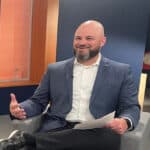
All of us have heard most of the objections clients and prospects have when deciding whether or not to work with us or continue to work with us. The top objections include: I already have an advisor, I am not interested, I don’t have a need, I want to think about it, it costs too much, I have to talk it over with my spouse, and get back to me in three (or six, 12, etc.) months.
Unless you lost the business to a “better” financial advisor, a loathe thought, the problem was likely that you:
- Had an unqualified or poor fit prospect, which includes meeting with only one of multiple decisionmakers and not your target audience.
- Have a less than effective “sales process.”
- Did a poor job establishing the value you offer.
- Did not engender trust.
An effective sales process should close 60% to 75% of the prospects you meet with.
This article addresses three challenging cases where the advisor had to dig deeper to resolve the client’s “concerns” and provides ideas for working through your challenging situations. Another takeaway is that some prospects are so cost focused that there is little one can offer to overcome this, regardless of the amount of subjective value you can identify.
Case 1: The Value Is Real, the Costs are Realer
An 86-year-old woman who was widowed about six years ago is a do-it-yourself investor who has never worked with a financial advisor. She has no heirs, no immediate family, no lifelong friends and outdated trusts. She is also a small business owner and has cancer, although we do not believe the disease will cause imminent death. In meetings, she has the tendency to be cantankerous. We hypothesize that she fears trusting anyone, especially regarding her assets, as she has been independent for years.
One could question why an advisor would be willing to step into this emotional fray regardless of the women’s multi-million-dollar asset situation. The advisor would have to invest a lot of effort just to gain her trust and, despite the prospect’s wealth, the potential advisory income might not be worth it.
My client, a generous advisor who has a caring soul for those who need his help, chose to look beyond the surface. He knows this woman needs to have an end-of-life plan that will reduce her stress and help her live out her remaining days more peacefully. My client has spent decades working with challenging clients and is charitably minded. Perhaps he was influenced by his early life with a very challenging father, his midlife with a more-than-challenging spouse, or his efforts to teach his children kindness and other values.
A comfortable life
My client Immediately got to work thinking about how to help this prospect who, despite being a business owner, lacked experience in financial planning, trust and estate planning, and managing non-security assets. For example, she did not know she could update an outdated joint trust; she didn’t know she got a step-up in basis on her late husband’s portion of the home they had shared, to its value at the time of his death; and she didn’t know that normally tax exclusions apply to the surviving spouse Before my client gave her his professional advice, she was prepared to pay hundreds of thousands of dollars in capital gains taxes on the sale of that home, which is still her primary residence But assets in joint trusts typically step up in basis by 50% when the first spouse dies and trusts created before 1977 allowed for a 100% step-up in basis.
Paying a lower capital-gains tax on the net gains from the sale of her home, thanks to the step-up in basis, will enable the woman to afford to live in a modern, easy-to-maintain, independent-living community and have enough capital to transition to assisted living should she need that at some point.
Charitable wishes
The prospect also wants to pass her financial legacy to her favorite charitable institutions. She has been taking required minimum distributions from her self-managed IRA to fund her living expenses. along with Social Security benefits and her small-business income. My client suggested that she use her self-managed brokerage account or Roth IRA to fund part of her living expenses and donate her RMD from her regular IRA to her favorite charitable institutions, tax-free. This would enable her to increase her donation amounts and decrease her overall tax payments. Her overall tax rate would also go down because she is not taking the RMD directly. This also reduces Medicare costs because overall income is reduced without the RMD.
Summary of benefits
By working with my advisor client, the prospect can achieve the following:
Financial benefits
- Mid-six figure tax savings from increasing the cost basis of her home to be sold to fund improved lifestyle.
- Reduced tax bracket.
- Lower Medicare costs.
- Professionally managed assets that would allow the client to have an intentionally developed, tax-efficient portfolio instead of her current haphazard securities holdings.
- Greater cost transparency (all in at 1%).
- Updated and secure trust agreements, with a well-known institution serving as a successor trustee and her advisor acting as an intermediary to track the execution of her estate.
- . Increased charitable contributions.
Personal life benefits
- A responsible, vetted CPA and trust-and-estate attorney with the financial advisor acting as a single point of contact.
- A trusted advisor and confidante committed to providing monthly contact and ad-hoc additional contact as desired.
- The advisor’s commitment to seeing that her wishes are executed properly as she desires when that time comes.
- Peace of mind and reduced fears by being part of a community.
The rub
The situation remains open because the prospect doesn’t want to pay my client a 1% annual fee on assets which would be, at its height, between $2 and $3 million. She assumes she pays no fees today, which is untrue but also not transparent.
In this case, it appears that money not spent, or money saved, is not valued as much as the transparent fees of an advisor. It might also be true, at least in this case, that the value of professionally managed assets and intangible benefits ( e.g., vetted professionals, or personal life benefits) are not as highly valued as actual dollars spent on fees.
Lesson: In every sales situation, it is critical to understand the values of the client or prospect and where possible, the drivers (i.e., why do they feel that way?).
The approach
For obvious reasons, the situation must be resolved soon. The woman needs an advocate and professional to get all this done near term and it’s a huge time commitment on the part of the advisor, because the the costs of the time required will likely exceed the fees. My client knows this but believes in what he is offering, which is what he offers all his clients though they’re not currently at this life stage.
Our approach will be to present a comprehensive plan as outlined above and discuss it formally in detail. We will continue to meet regularly over the next few months to maintain current awareness of the situation, and simply ask how the woman will meet the needs being offered if she does not hire the advisor.
Case 2: The Young, Wealthy Worrier
A more typical situation is when an advisor’s client requires a better understanding of investing and the operation of the securities markets.
In this case a young adult with very wealthy parents had amassed fairly large personal assets between $500,000 and $1 million. It appears he may not have been educated in the basics of investing, such as the volatility of individual equity and fixed-income securities. It also appeared that his wealthy parents raised him with entitlements because he is extra demanding.
Lesson: Advisors need to understand how individuals have been raised in general, and with respect to money.
Questionnaires often ask questions such as:
- What do you want your money to do for you? Is money a means for an end for you?
- What are your first memories about money?
- What you have learned about the stock and bond markets.
- Tell me how you were raised about money.
- Tell me about your current and desired future lifestyles/
- Have you had any experience with other financial professionals?
- How will you know when you have enough?
- What kinds of financial situations cause you to lose sleep?
These questions have more have much more meaning when prospects or clients are asked to describe actual situations. In this situation, the young client voiced significant concerns and became frightened when his portfolio showed what he considered to be significant losses in days or weeks.
The Rub
The financial advisor put together a plan with the client. From what the client told him, the advisor knew the client would need the assets for real estate projects. The advisor explained how the assets could be sold or used as collateral for borrowing, and he and the client agreed upon specific actions. Unfortunately, the client did not follow the plan and advice. When it came time for him to take a loan, he didn’t understand that interest rates change with time, although the advisor had discussed that with him.
The advisor also discussed other key educational points, including:
- Expect market volatility while building wealth. For example, investors fortunate enough to have participated in the extraordinary 782% growth of the S&P 500 from Jan. 1, 1993 (435.23) to Dec. 31, 2022 (3839.50), an average annual return of about 9.56% or an ROI of 1,423.83%, had to be been willing to suffer the market losses of 2000 to 2002, 2008. 2018, and 2022.
- Compounding is powerful for growth, but it takes time to work.
- Diversification expects some securities to lose while others gain.
I suggest viewing the Davis Funds videos with Morgan Housel. Great conversations for you and clients on the importance and value of compounding, risks, volatility and more.
The approach
In addition to working with his advisor, the young client also spent time speaking with his parents about how best to work with an advisor and they shared their experiences. Ultimately, the client became less worried, he didn’t feel compelled to speak incessantly with the advisor during the day and after business hours, and the situation has normalized.
Lesson: This case shows the need for in-depth understanding of client’s backgrounds and expectations and the need for continuing personalized education. This case also suggests clients forget quickly and their concerns amp up frequently, especially when markets are volatile. Remember to communicate with clients.
Case 3: Fear, Bravery and Diversification
This is another case that many of you have also seen: A client with a very large position in a single security — the shares of their employers or former employer. This dependency is risky no matter how good the company is. It’s also doubly risky to invest very heavily in a company in which you are investing your time. Should the company struggle, the risk of simultaneously losing your portfolio and your job can be debilitating.
This situation involved a middle-aged executive. Her long-time, trusted advisor (my client) suggested that she reduce her holdings in her company stock holdings by 60% (leaving 40% of the original amount). employer’s company to 40% of her portfolio over the next six months. The stock had gone to the moon and he was worried about what would happen if it crashed. It wasn’t an easy conversation, but the advisor knew it was in the “best interest” of his client, with whom he had a tight relationship.
Although the client is quite wealthy and the advisor had built a financial plan her, did Roth conversions at appropriate times, ensured development of needed trusts, etc., he worried all the careful planning could be wiped out.
In this situation, the decision to reduce her company-stock holdings worked out very well. The stock’s price peaked and dropped significantly; it took years to recover. Selling off company stock allowed her to build a more diversified portfolio that has grown greatly in value.
But the real lesson is more about offering advice based on your knowledge, your craft, your discipline, a belief system based on your expertise and your experience and education. It is also based on your relationship with the client; strong communication; and, as always, a bit of luck.
David Leo is Founder of Street Smart Research Group LLC. He is an author, speaker, coach, consultant and trainer to financial professionals. David is an experienced business manager who works solely with Financial Advisors, Planners and firms who want to organize, structure & grow their businesses by attracting, servicing, and retaining affluent clients. He can be reached at David@CoachDavidLeo.com.. 212-598-4229 (office) or 917-379-1249 (cell).







